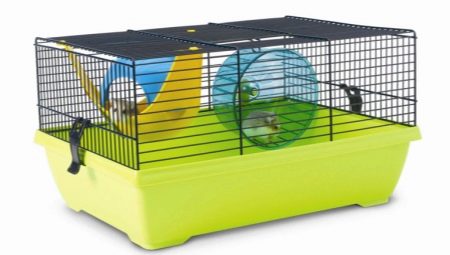Dzungarian hamster is an interesting and funny animal, which can often be found in apartments as a pet. It is believed that these animals do not live long, but their lifespan depends on the conditions of detention. The main factor for ensuring a full and comfortable life of a furry pet is the acquisition of a high-quality cage.

Requirements
The main criteria when choosing a cage is its comfort and safety for the pet. In addition, the future home of a furry friend should be convenient for its owner. The owner needs to choose a place in advance where the new home will be located, as well as pick up a product for a certain size, not less than the minimum recommended for a dzhungarik.
The materials the cell is made of must be not just durable and sturdy, but also safe. Rodents taste everything they see, so the bars they tested should not be harmful to the animal’s health.
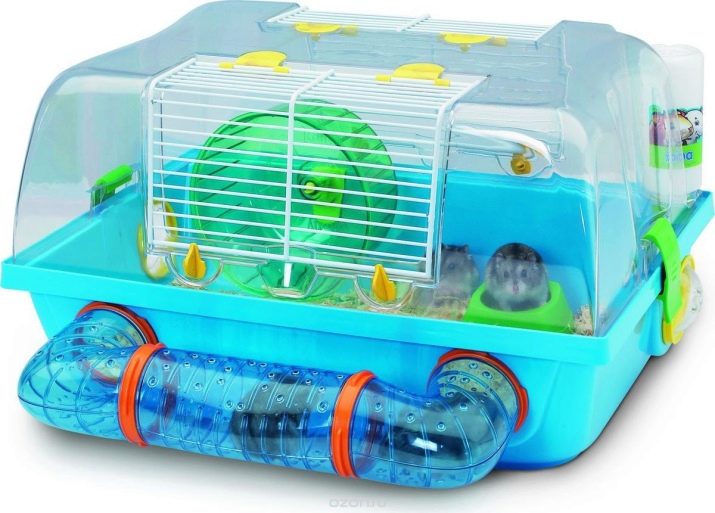
Choose a cage in which it will be easier to clean. It is more convenient to buy a product with a pallet. Be sure to check that the door closes well.
Dzhungariki are very curious creatures, prone to shoots, and a weak locking device may not withstand his sharp teeth. Try to pre-buy a home with built-in paraphernalia. This will be a more economical option, in addition, in the future you will not have to think about where and how best to install all the additional devices.
Kinds
Materials
Pet shops offer several cage options for hamsters.
- Of metal rods. A good ventilated home in which the rodent feels quite comfortable. The inconvenience is that through the rods you can clearly hear the noise that the hamster makes, and around it always forms dirt. Filler and debris easily penetrate the rods. The grill itself must be made of high-quality solid metal.
Do not take products made of copper or aluminum - the animal gnaws at everything, therefore it will quickly render such rods unusable.
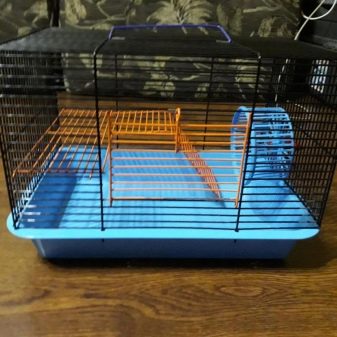
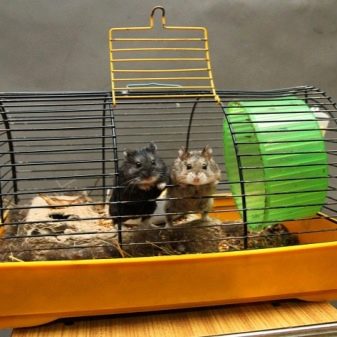
- Plastic or glass aquarium. In such a closed house, the noise level is significantly reduced, and there is almost no debris. In addition, this is the safest option for a house where there are cats - it is unlikely that a predator will get to a rodent, which is kept in an aquarium under a breathable net. However, the hamster himself in such a home will be uncomfortable, as it does not allow air to pass through well.
For the owner, the inconvenience is that the aquarium is difficult to clean.
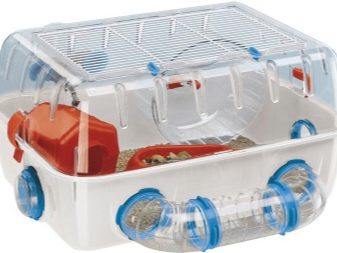
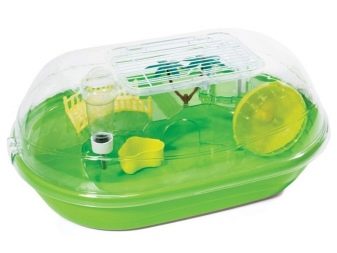
- Lattice cage with plastic tray. This is the most preferred option. In such a cage, it’s easy to clean up. If the dwelling is two-level, and the “floor” of the second floor is made in the form of a lattice, then check if the pet is injured by jamming its paws or abdomen between the bars. If the risk of injury is high, cover the second level with cardboard.
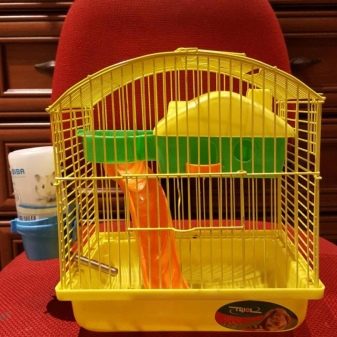
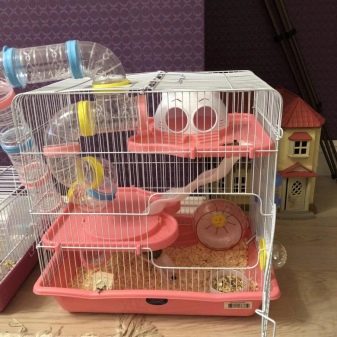
It is recommended to buy cells in which the second floor is made of plastic and is qualitatively strengthened. Try to avoid wooden elements in the cage, as the wood absorbs unpleasant odors, and also becomes a favorite material for grinding rodent incisors.
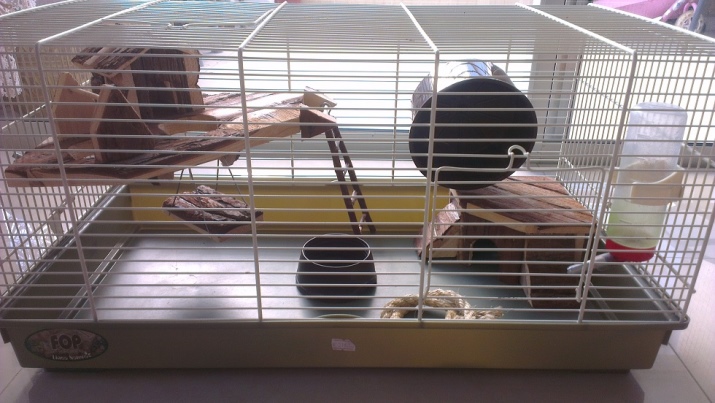
Designs and Sizes
The length of the cage for one dzhungarik should be at least 50 cm. This is even more than for the Syrian hamster. And although the Syrian is larger in size than the dzhungarik, but still a miniature pet must run a greater distance per day, so he needs a more spacious cage. If the cage is bought without additional equipment, then do not forget that the area will be reduced due to the established mandatory attributes.
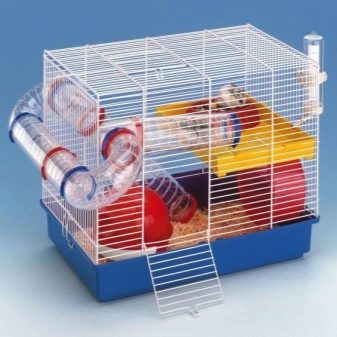
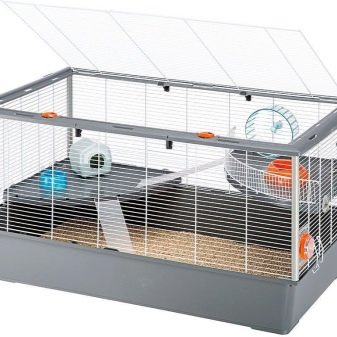
Another important point when choosing a cell is the gap between the rods. It should be no more than 10 mm.
Give preference to a cage with horizontal bars - rodents like this form more, moreover, it is much easier to attach additional devices to the rodent's comfortable life to the horizontal grid.
If the distance between the rods is greater, the hamster will definitely try to escape. And even if the cell contains a fairly well-fed individual, this factor does not deprive it of plasticity.

If a very spacious cage is acquired, then do not forget that the hamster is cleaned quite often, and the large dimensions of the cage will greatly complicate this process.
However, if the owner contains several hamsters at once and plans to breed them, it is better to opt for a large cage. Separately, it is worth mentioning the bottom of the dwelling. It can be with a retractable mechanism or high. A retractable bottom is much more convenient in terms of cleaning, but a cage with a high bottom is suitable for breeders, since high sides will not allow curious little hamsters to fall outside the cage.
Selection recommendations
The shops offer simple and multi-level cells. A simple one-story option is suitable for one pet and for a slightly lazy owner. A small cage is easier to clean. But if the owner is responsible and puts the comfort of his pet above his laziness, he will buy a multi-level cage. It is easier to place all the necessary paraphernalia in it, and it will be more spacious for the hamster himself to live in such a house.
Typically, animals prefer to engage in vigorous activity on the ground floor, and relax on the second floor, although, of course, each pet has its own preferences.
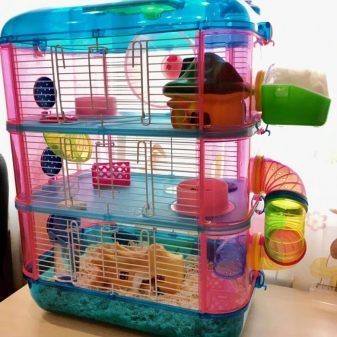
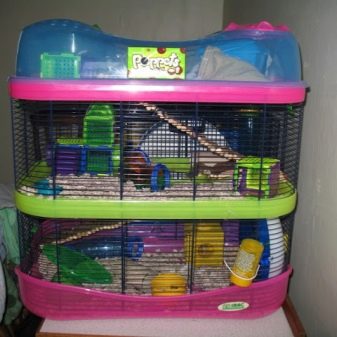
Where to put?
If other pets are kept in the house, namely cats and dogs, it is recommended to place the cage with the hamster so that the predators could not get to such a tidy prey.
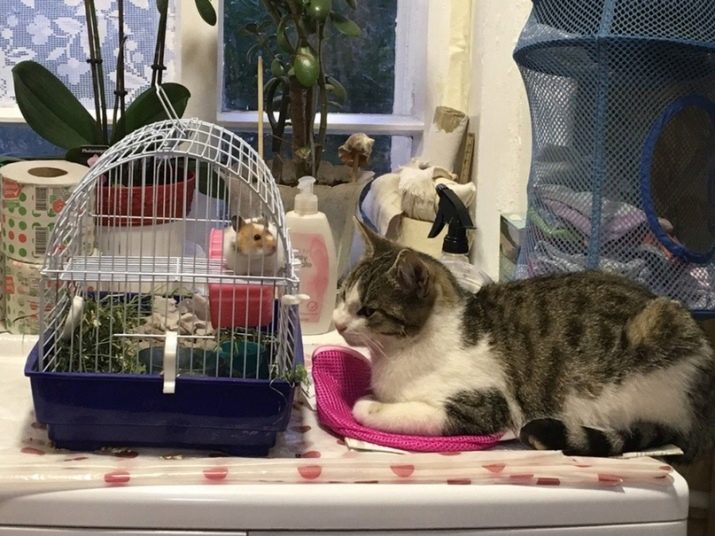
And also when choosing a place for housing, pay attention to such moments as:
- lack of drafts - hamsters are prone to colds, so keep your pet away from drafts;
- lack of direct sunlight - overheating for the hamster is as dangerous as hypothermia, so do not leave the animal in the sun and near the window; do not place near electrical and heating appliances;
- lack of noise - Do not place the cage near a loudly working equipment, for example, on a TV or music speakers; the cage should be in a quiet comfortable place so that nothing bothers the pet.
To make cleaning easier, place the cage in a cardboard stand. It can be done from a regular box by cutting the height of the walls.
Then you don’t have to clean garbage around the cage every day, you just have to shake out the box and put it back under the cage.
How to equip?
To provide a fluffy pet with a full life, it is not enough for him to offer content in an empty cage. It must necessarily house a house in which the hamster will rest and hide his supplies. Place the house somewhere in the corner. Mandatory attributes - drinking bowl and feeder. Usually they are already included with the cage, but are sold separately.
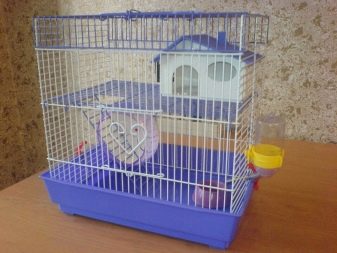
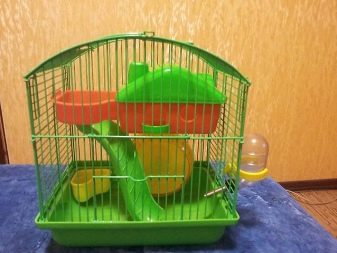
Every day, the hamster should run several kilometers. A running wheel will help ensure such activity. Try not to set it very low. If the cage contains more than one individual, then one pet can injure its neighbor, who climbed under a low wheel.
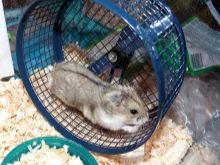
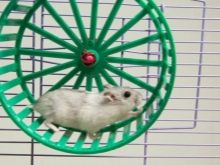

For dental health, place chalk or mineral stone in your home. In its absence, the hamster will begin to nibble the rods to grind its fast-growing teeth. By the way, if even in the presence of a stone the animal doesn’t stop gnawing at the cage, then most likely he’s just bored, in this case, equip his house with tunnels, pipes, podiums.


These items attract not only hamsters, but also their owners. It is very interesting to watch how a pet studies its interior items, runs through pipes, drags various things interesting for him. To place all these important items, it is recommended to buy a spacious cage.
How to clean?
Regular cleaning of the cage affects not only the health and comfort of the pet itself, but also the atmosphere in the owner’s house. Dzhungariki are small animals, but the products of their vital activity quickly begin to emit unpleasant odors if they are not removed on time.
Every day, the responsible owner must carry out spot cleaning of the hamster’s home, that is, clean up waking up food, change water, remove waste products. Complete replacement of the filler is done once every two weeks.
The following steps should be followed when cleaning your pet’s home:
- put the hamster in a temporary home, even an ordinary jar will do;
- throw the filler out of the pan, but leave a handful of old contents;
- remove only rotten products from the hamster’s stocks that can poison it; do not touch his “pantry” completely, as he tried very hard to accumulate a large supply, and will be stressed when he finds the loss;
- Rinse the tray thoroughly with warm water using a sponge, you can use baby shampoos;
- with a damp cloth, wipe all the interior items in the cage and rods;
- wipe the drip tray and rods dry, put in place all the attributes, mix the fresh filler with a handful of the old left and fill it into the cage.

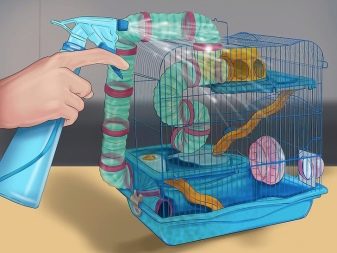
How often do cells change?
Dzungarian hamsters do not have a long life expectancy. For one hamster, one cage is enough. If the owner breeds dzhungarikov, then the cage needs to be replaced if rust is noticeable on the rods and the pallet is cracked.
The cage must be replaced if one of the fluffy residents at least once escapes through the bars - his relatives are guaranteed to repeat the feat. And also it is worth changing the cage if the previous pet survived some kind of infectious disease. Often, even a thorough disinfection does not completely eliminate the residual bacteria on the rods, which is very dangerous for a new fluffy tenant.
In the next video, see a review of the cage for the Dzungarian hamster.
